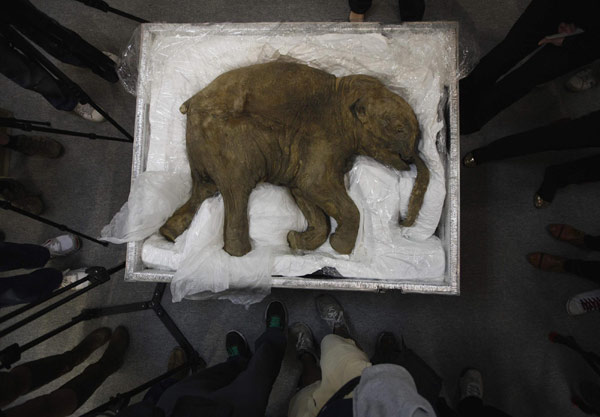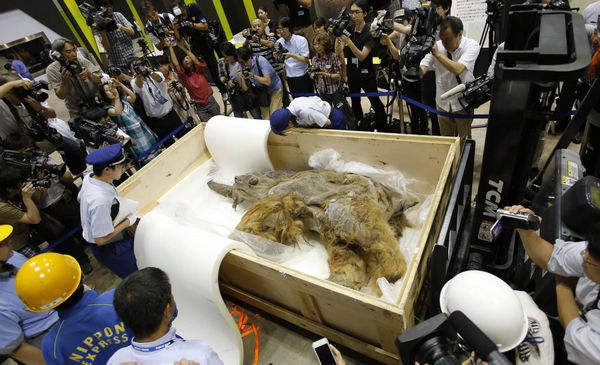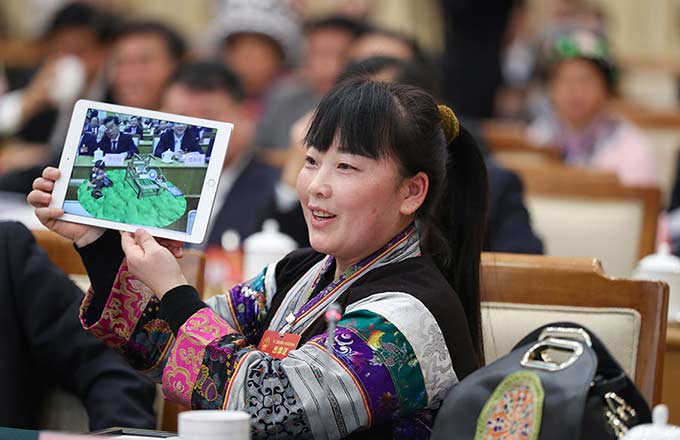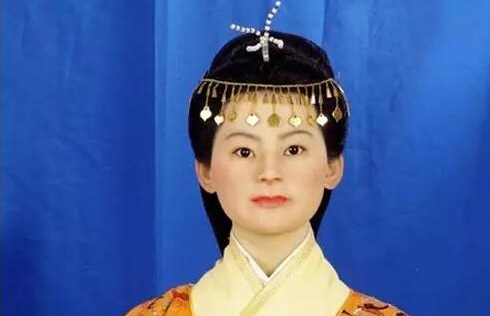Long way to go before mammoths live and breathe again, Chinese scientist says
 |
|
The carcass of a well-preserved baby mammoth on display in Hong Kong in 2012. [Photo/Agencies] |
Though no longer just a pipe dream, resurrecting the long-extinct mammoth is still a long way off, a Chinese scientist says.
China National GeneBank chief executive, Xu Xun, told Science and Technology Daily on Sunday that to reproduce a mammoth, a relative of the modern elephant that disappeared 4,000 years ago, would involve three steps. First, the cell of a mammoth would need to be revived, then developed into an embryonic cell which could be inserted into a surrogate to deliver.
The Shenzhen-based CNGB is a government-supported institute devoted to the collection of biological resources and information sharing.
"The scientists first extracted the cell nucleus from an intact mammoth found in the Siberian permafrost in 2013 and injected it into the cell of an Asian elephant. In this way, they revived the cell of the mammoth. Then they reproduced the embryonic cell of the mammoth through clone and stem cell technology," Xu said.
Xu said surrogacy is the most difficult part in bringing back the mammoth as putting the embryo into the womb of a surrogate female elephant will likely lead to miscarraige due to the gene differences.
"Creating a man-made uterus is a choice. It will take around five to 10 years," he said.
According to a Feb 17 Telegraph report, a team at Harvard University said they can recreate a mammoth-elephant hybrid within two years by splicing the mammoth genes into the genome of an elephant embryo. The hybrid would have recognizable traits of a mammoth such as shaggy coat, big ears, and anti-freeze blood.
The revival of extinct animals is a controversial issue. Proponents believe it can help save the endangered species while opponents argue it goes against nature.
The "resurrected" mammoth would only have some traits of the mammoth and would not be able to live in the wild, Yuan Xun, a paleontology researcher at Chinese Academy of Social Sciences, said.
Yuan said that the extinction of species is a natural phenomenon. In a larger context, a species disappears in the world after existing for an average of 2 to 3 million years.
Xu Xun said reviving extinct species is important for protecting biodiversity, but it should not be used in large scale.
 |
|
A 39,000-year-old female woolly mammoth which was found frozen in Siberia, Russia and exhibited in Yokohama, Japan, July 9, 2013. [Photo/Agencies] |


















